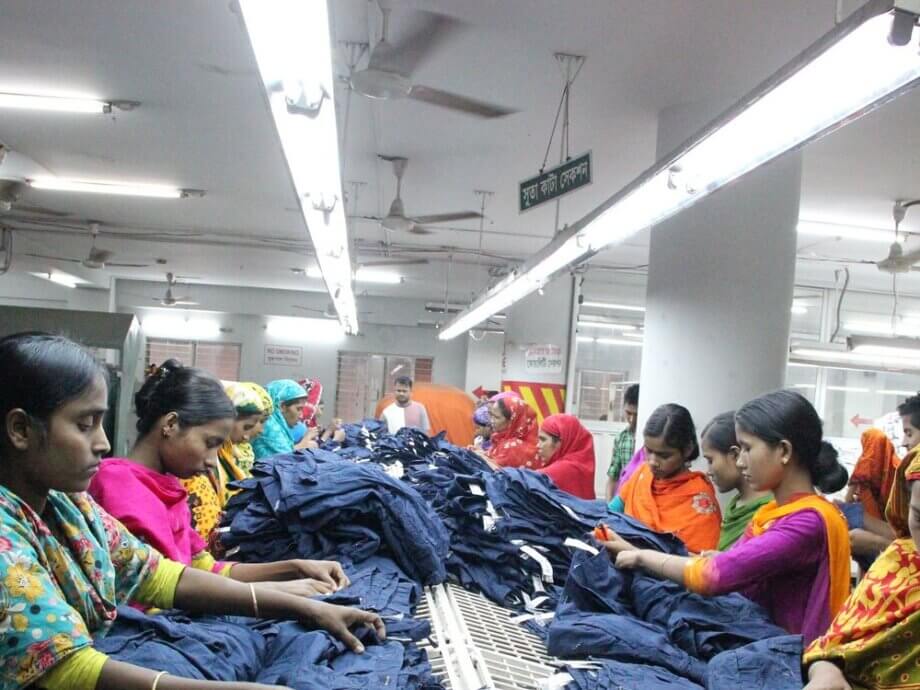Bangladesh’s Garment Industry Faces Uncertainty Amid US Tariff Threat
Bangladesh, the world’s second-largest garment exporter after China and Vietnam, is facing a critical moment as the threat of a 35 percent US tariff on its apparel exports looms. The potential tariff has already caused major disruptions, with suppliers to retail giant Walmart delaying or putting on hold significant orders from Bangladeshi manufacturers. This development has sent ripples through the country’s economy, which relies heavily on the garment sector for both export earnings and employment.
- Bangladesh’s Garment Industry Faces Uncertainty Amid US Tariff Threat
- Why Are US Tariffs on Bangladeshi Garments Being Considered?
- Immediate Impact: Walmart Orders Delayed and Industry Anxiety
- How Tariffs Affect Bangladesh’s Economy and Workers
- Bangladesh’s Response: Negotiations and Diversification
- Broader Implications: Global Supply Chains and Trade Policy
- In Summary
Why Are US Tariffs on Bangladeshi Garments Being Considered?
The United States is Bangladesh’s single largest export market for garments, accounting for a substantial portion of the country’s $45 billion apparel export industry. The proposed 35 percent tariff is part of a broader US trade policy shift, aimed at addressing trade imbalances and concerns over labor standards and market access. While Bangladesh has previously benefited from relatively low tariffs under the Generalized System of Preferences (GSP), its rapid export growth and changing US trade priorities have put it under renewed scrutiny.
In 2024, the US imposed a 10 percent tariff on certain Bangladeshi apparel products, which manufacturers largely absorbed to maintain competitiveness. However, the prospect of a 35 percent tariff is seen as unsustainable for most Bangladeshi factories, especially smaller ones with thinner profit margins.
Immediate Impact: Walmart Orders Delayed and Industry Anxiety
The uncertainty over tariffs has already led to concrete consequences. Classic Fashion, a major supplier and buying agent for Walmart, recently put on hold an order for nearly one million swim shorts from Bangladesh. While Walmart itself did not directly issue the hold, the move reflects widespread caution among suppliers and buying agents who fear being caught with unsellable inventory if tariffs are imposed suddenly.
Factory owners in Bangladesh are bracing for a sharp drop in orders if the tariffs go into effect. Many have already seen US importers delay order confirmations or reduce the size of their commitments. According to industry sources, some US retailers have “front-loaded” their orders—placing larger orders earlier in the year to stock up before any tariff hike takes effect. This has led to a temporary surge in exports: US clothing imports from Bangladesh rose by 21 percent in the first five months of 2025 compared to the previous year.
However, this front-loading is expected to be followed by a slump, as retailers wait for clarity on the tariff situation before placing new orders.
How Tariffs Affect Bangladesh’s Economy and Workers
The garment sector is the backbone of Bangladesh’s economy, accounting for 80 percent of export earnings and employing over four million people, most of them women from rural areas. The industry’s success has been a key driver of poverty reduction and social progress in the country.
Tariffs of 35 percent would make Bangladeshi garments significantly more expensive in the US market, eroding their price advantage over competitors. Factory owners say they cannot absorb such a steep increase, and fear that buyers will shift orders to other countries with lower tariffs or more favorable trade terms.
Smaller manufacturers are particularly vulnerable. Unlike larger factories, which may have reserves or diversified client bases, small and medium-sized enterprises (SMEs) often operate on thin margins and depend heavily on US orders. A sudden drop in demand could force many to cut jobs or even shut down.
Expert Perspectives on the Tariff Threat
Industry leaders and trade experts have voiced concern about the potential fallout. Rubana Huq, former president of the Bangladesh Garment Manufacturers and Exporters Association (BGMEA), explained:
“A 35 percent tariff would be devastating for our industry. We have already absorbed a 10 percent tariff, but this level is simply not sustainable. Many factories, especially the smaller ones, will not survive.”
US-based trade analysts note that while tariffs are intended to protect domestic industries or address trade imbalances, they can have unintended consequences for both sides. American retailers and consumers may face higher prices or reduced product variety if tariffs disrupt established supply chains.
Bangladesh’s Response: Negotiations and Diversification
In response to the threat, Bangladeshi officials are actively negotiating with the US government to seek a reduction or exemption from the proposed tariffs. The government is highlighting the country’s progress on labor rights, workplace safety, and environmental standards—areas that have been points of contention in past trade discussions.
At the same time, manufacturers are looking to diversify their export markets. Europe is the second-largest destination for Bangladeshi garments, and some factories are seeking to increase orders from European clients to offset potential losses in the US. However, this often means accepting lower prices, as European buyers tend to be more price-sensitive and the market is highly competitive.
Retailers’ Strategies: Risk Management and Supply Chain Shifts
US retailers are also adjusting their strategies in light of the tariff uncertainty. Some are delaying order confirmations, while others are exploring alternative sourcing options in countries like Vietnam, India, and Indonesia. The risk of sudden cost increases has made buyers more cautious, and some are seeking to renegotiate contracts or shift to suppliers in countries with more stable trade relations with the US.
Broader Implications: Global Supply Chains and Trade Policy
The situation in Bangladesh highlights the fragility of global supply chains and the far-reaching impact of trade policy decisions. Apparel manufacturing is a highly globalized industry, with raw materials, labor, and finished products often crossing multiple borders before reaching consumers.
Tariffs and trade barriers can disrupt these networks, leading to job losses, price increases, and economic instability in exporting countries. At the same time, they can prompt shifts in sourcing patterns, as buyers seek to minimize risk and maintain profitability.
For Bangladesh, the current crisis underscores the need for continued investment in product quality, compliance, and market diversification. It also highlights the importance of stable and predictable trade relations for developing countries that depend on exports for growth and development.
In Summary
- The threat of a 35 percent US tariff on Bangladeshi garments has led to delayed and canceled orders, including from Walmart suppliers.
- Bangladesh’s garment sector is vital to its economy, accounting for 80 percent of exports and millions of jobs.
- Factory owners and industry leaders warn that such high tariffs are unsustainable and could force closures, especially among smaller manufacturers.
- Bangladesh is negotiating with the US to reduce or avoid the tariff, while also seeking to diversify exports to Europe and other markets.
- The situation illustrates the vulnerability of global supply chains to trade policy changes and the need for stable international trade relations.




